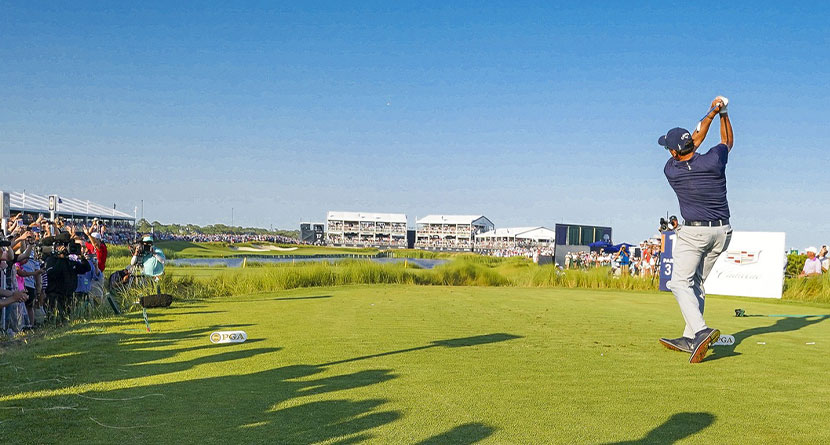I’ve been in the golf business for 32 years and playing golf seriously for even longer. Like most golf fanatics, I usually can’t wait to play the courses that I see the pros play on TV. I watched the PGA Championship with heightened interest this weekend because I vividly remember the dramatic “War On The Shore” Ryder Cup.
Think about it: how many golf events bring a top player to tears and the United States a victory?
As I was glued to this weekend’s PGA, I found myself thinking that it may be way more fun to watch this event than to play in it. Even allowing that I would play from more appropriate, forward tees, just how many golf balls might I need to finish a round at Kiawah? I’m officially in no rush to test my diminishing skills on this spectacular course.
There were two things that I found unusual and remarkable about this tournament?
- There were NO Errors from the green-side sand this week! Why? Because contrary to what we saw, there was no green-side sand. All that plentiful white stuff was “waste area.” So, the clutch shot that Phil Mickelson holed in the final round on the 5th hole was NOT a great sand shot but a great shot from a “waste bunker.” Think I’m wrong? There is no sand data for this event on PGA Tour.com. EVERY shot from within 30 yards of the edge of the green fell into the Tour’s Short Game or Around the Green stats with no distinction between sand, fairway or rough. The important takeaway from this for the rest of us is to know where you are. If the sand is a waste area, we can take practice swings and ground our clubs.
- The difficulty of the driving! The wind — and changing wind directions — was a significant factor. Nick Faldo repeatedly mentioned the difficulty of players finding their target lines with the changing winds. Every time I looked for a “target” from a shot behind the players, all I could see was trouble. That said, fairways hit per round at Kiawah (8.3) were almost identical to the 2020 Tour average (8.4). The major difference was in the frequency and severity of the misses – ERRORS! If you have read my articles or blogs, you know that I emphasize driving errors and the significant influence that they have on scoring. These errors fall into three categories:
- No Shot – A drive hit out of play requiring an advancement to return to normal play. The average cost for this error on the PGA Tour is .75 shots.
- Penalty-1 – Ball hit into a penalty area or unplayable lie. This requires a drop and results in a cost of 1.3 strokes on Tour.
- OB/Lost ball – Stroke and distance penalty requiring replaying the shot. These have a cost of 2+ shots. This happens on Tour – but rarely. Tiger had one years ago on his way to a win at Bay Hill.
Our game analysis program measures driving errors in two ways:
- Frequency – number per round.
- Severity – The cost, in strokes lost, per error.
In the 2020 PGA Tour season, 0.63 driving errors were recorded per round at a cost of 0.89 strokes each. The less costly No Shot errors represent 70% of the Tour total with an average cost of .75 strokes. Obviously, the winners and the top-5 made significantly fewer errors at a lower cost than the field.
This holds true for Kiawah, but the average frequency of driving errors was far greater [1.14/round, or +81%] and more severe [average cost 1.12 strokes, or 26% more severe].

I immediately went to look for comparisons. Could we be looking at a new high for Driving difficulty? Bay Hill, with all of its water off the tee, came close with 1.06 errors/round in 2020. But Bethpage Black, home of the 2019 PGA Championship, produced a whopping 1.6 driving errors per round, making Kiawah look like a walk in the park. However, due to very little water or OB at Bethpage, the average cost was only .87 strokes.
In the chart, I have inserted the Driving error numbers for two male handicap groups from our database. How perilous was the driving at Bethpage Black when the best players in the world made 35% more driving errors than the average, 15-19 handicap golfer?
Peter Sanders is the President and a founding partner of ShotByShot.com, the system SwingU uses for its Versus product.
Peter has worked with PGA Tour players and major champions such as Zach Johnson, Lucas Glover, Smylie Kaufman, Zack Sucher, Sepp Straka, Dylan Frittelli and Michael Thompson to analyze and interpret their data for game improvement.




